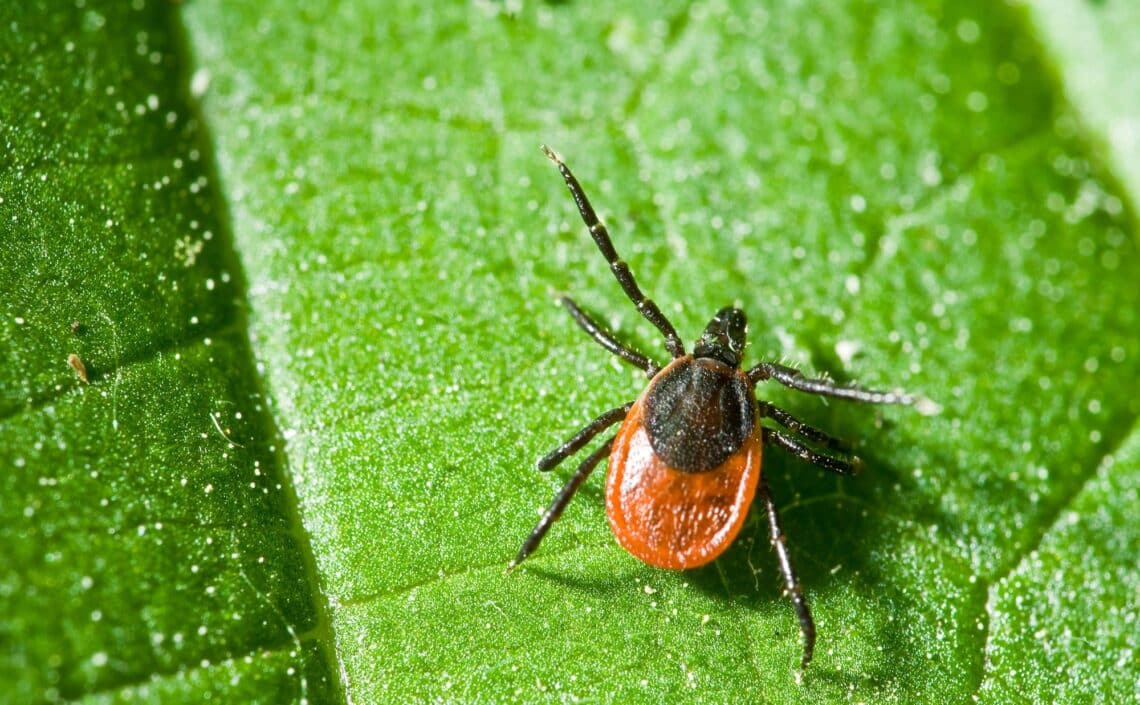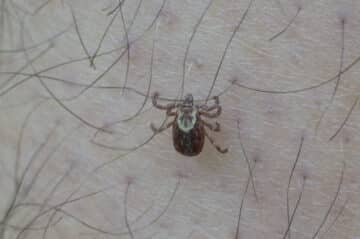Bad News About Ticks in Minnesota
It’s not your imagination. Ticks and tick-borne illnesses are showing up in the news a lot these days. Unfortunately, it’s because more people are getting sick, and new diseases are showing up where they weren’t found before. A recent study by the CDC found the number of cases of disease transmitted by ticks and mosquitos tripled between 2004 and 2016. In that same time frame, seven new types of tick-borne illness were found with the potential to infect people in the United States.
There are several possible reasons for these increases. For example, changing weather patterns have allowed ticks to live in areas that used to be too cold for them to survive. Additionally, air travel along with a lack of effective vaccines has allowed these diseases to keep spreading.

What tick diseases are found in Minnesota?
- Lyme Disease is the most commonly diagnosed tick-borne illness in Minnesota. The black-legged tick (better known as the deer tick) carries it.
- Anaplasmosis is less common and also carried by deer ticks.
- Other diseases less commonly found in Minnesota include Rocky Mountain spotted fever, Ehrlichiosis, and Powassan Virus Disease
- Visit the Minnesota Department of Health’s Tick-borne Diseases page for a full list.
What are the common symptoms of tick-borne illness?
Not everyone will experience the same symptoms. Your care provider will also need to know where you’ve traveled to determine which type of tick may have bitten you. The CDC lists these common symptoms:
- Fever and/or chills
- Aches and pains—joint pain is common in Lyme disease
- Rash that may be distinct according to the disease—Lyme disease features a bulls-eye rash
The CDC estimates there are 300,000 cases of Lyme disease diagnosed each year in the United States, while only 35,000 confirmed cases actually get reported. Lyme disease comes from the black legged tick (commonly known as the deer tick).
How can I avoid being bitten?
The best way to avoid getting a tick-borne illness is to keep from getting bitten in the first place. We recommend minimizing tick-friendly habitats such as long grass or damp areas with leaf clutter near your home, keeping your lawn and walking paths mowed short, and to wear long clothes and use an EPA-approved tick repellant. Learn more about keeping ticks off your family from our experts!
What should I do if I get bitten?
Remove the tick using clean, fine-tipped tweezers
Dispose of the tick properly
- To properly dispose of the tick, flush it down the toilet, wrap it tightly in a sealed bag or with tape, or submerge it in alcohol—don’t crush it.
If you develop symptoms or feel sick, contact your care provider
- Keep a good record of when symptoms began, including monitoring for fever, chills and other symptoms.
- Share details on where you were bitten, any symptoms, and the geographic location of the tick exposure/you believe the tick bit. This will help determine which types of ticks and illnesses you may have been exposed to.
- Seek medical attention quickly if you believe you have a tick-borne illness. If left untreated, many tick-borne illnesses progress causing worse physical damage.
Live in the Minneapolis & St. Paul Metro area?
Our experts offer tick control as part of our outdoor protection plan or as a single service!
Other items you may be interested in:

Protect Your Backyard Paradise from Mosquitoes
Summer in Minnesota can be paradise. Except for the mosquitoes–sometimes referred to as the state bird–and rain. While you can’t do anything about the weather,

Tips to Keep Ticks Off Your Family and Out of Your Home
There are approximately 1,000 cases of tick-borne illnesses, including Lyme disease, diagnosed in Minnesota every year. Certainly, this is cause for concern for you, your

Mosquito & Tick Control
Eliminate the incessant swatting, buzzing, and biting of mosquitoes and ticks for your next outdoor social event or home BBQ.




